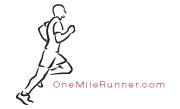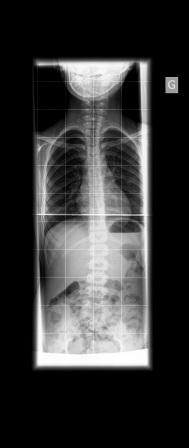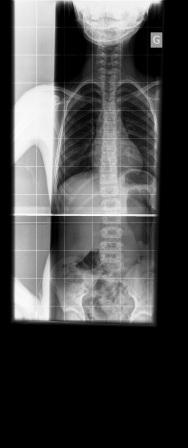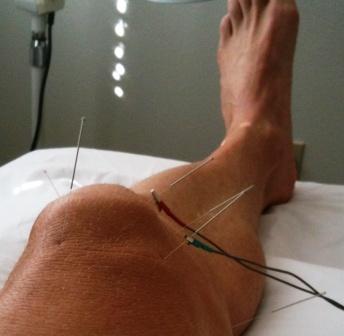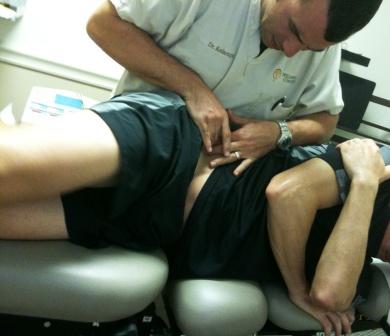My second week of training had a small bump in the road, but overall it went well.
Monday began with a 6 mile run followed by strength and power training. On Tuesday, Wayne Johnson and I ran a 6 mile run with fartleks thrown in for two miles on the grassy grounds of GT Bray fields in Bradenton. After the final speed work, I felt my right knee was tender and I stretched it out after our medicine ball, band, and hurdle work.
However, I still felt a bit of pain on my easy run on Wednesday after my 8 hours on the tennis court. Fortunately, I had a massage with Stacie Nevelus on Wednesday evening. She was able to alleviate the referring pain to my right knee (as it was coming from my lateral quad), but on Thursday it was still not 100% yet. After my tennis and easy run on Thursday, I saw Dr. K (Kotlarczyk) at Wellness Concepts in Bradenton. He does various manual therapies (massage, PNF, laser, chiro etc.) and fully addressed the knee. I walked away from the therapy pain-free.
After a long day of tennis on Friday, I ran 6 miles on Saturday with 10 x 100 meters in 15 seconds each repetition. The pain was totally gone and my stride felt long and powerful.
The importance of recovery sessions during the week is vital to building a base of fitness in training over a 4-month period. The sooner you seek attention to any training ailment, the better chance you have to fix the problem.
Category Archives: Topic – Recovery
Training Begins
I thought I would try something new this year before our 2011 event begins in May. I am going to share with you my weekly workout regime and then you can give me some feedback on the program.
My first week of training began with a 9 mile run on Siesta Key beach with Wayne Lee Johnson (he and I meet every Tuesday and Saturday for workouts). Sunday I did not run because I had 9 hours of tennis to teach on court.
Then, I ran 5 miles on Monday with my beautiful wife, Sekyen, followed by a full body strength endurance workout. Another 6 miles with Wayne on Tuesday followed by our 10-second sprints (all out) up the Ringling Bridge. We walk down the steepest portion of the bridge and then race up for 10 repetitions. We will be doing the bridge workout every other week.
Wednesday was another long 8 hour tennis day (this is the season) and I topped the day off with a massage by Stacie Nevelus in the evening. Thursday I met Sarasota High track coach, Kim Sheffield, and the distance track runners from Sarasota High at Payne Park (a city park with a 1/2 mile undulating, dirt track). I had a 2 mile tempo run with the 3 best male runners, Nick, David, and Courtland. The boys led the first mile in 5:55 and I led the second mile in 5:45. It was great to run with these students again.
Friday was a full body fitness day – strength training every part of my body with my new Body Protection program. So my 2011 training began with about 25 miles of running at various speeds and distances and a 40 hour work week on the tennis court. It feels good that my intense training has begun…
Different training for new event
As we embark on our 4th event, many people have been asking me about how my training will be different than other years.
First, I will be expanding the exercise program that I have been using over the past few years. Not only will I be incorporating the mobilization, strength, and flexibility movements in my training, but also I will need to add even more advanced plyometric training in order to deal with the challenging terrains, elevations, and conditions unique to this tour. I will be sharing my entire training program (from beginner to advanced) in a full-length DVD fitness program at the beginning of 2012. This movement based program will be the key element to keep me injury-free as I train for 3 months and race over a 5-month period.
Second, I will be adapting my speed training to only one time a week on the track and conduct most of my speed workouts on the road or off-road conditions to match the surface I will be racing on each month. There is not much I can do about the 6000 feet elevation at the Grand Canyon in May here in Florida, but I can find places that are close to the other conditions that I will be presented with in each race.
Third, my running regimen will be slightly different as well. I will perform a weekly mix of a long run (6-9 miles), a tempo run (2-3 miles), an interval workout (varied each week), 2 recovery runs (in between the faster days), and a sprint workout (my favorite). This mix of workouts each week should provide me the speed for the mile and the strength to race the mile over and over from May to September.
Lastly, I will add another recovery session after my training with my chiropractor/massage therapist. With my heavy training and turning 48 in April, a little more time “on the table” will be beneficial to create a successful training program.
Scoliosis
The last “stop” on our www.OneMileRunner.com recovery tour is Meilus Precision Therapy with Dave Wallwork. Dave uses his robotic machines to lengthen my muscle tissue. We use this therapy not only for treatment of injury or stiffness, but also as a regular program for body maintenance and injury prevention.
Here is Dave’s story on scoliosis and his treatment.
By Dave Wallwork
There are many causes for scoliosis. About 80%-85% of people with scoliosis have a type called IDIOPATHIC scoliosis. This means “no known cause”. Idiopathic scoliosis often runs in families and appears to be due to genetic or hereditary factors. It is not known what “triggers” the development of the curve, or why some curves progress more than others. Scoliosis may occur in children who are otherwise perfectly healthy. Meilus Muscular Therapy Method works on the theory that the muscles on one side of the spine are shorter than the other and therefore pull the spine towards the shortened side, causing the curving and in some cases the rotation of the spine.
According to the Scoliosis Research Society, about 10% of the adolescent population has some degree of scoliosis. This means that about 1,000,000 children just in the United States have scoliosis. About one fourth of these children, or 2%-3%, will require medical attention which may consist of observation for further progression of the curve, bracing or surgery, depending upon the degree of the curvature at the time of its detection. Some scoliosis may be so mild that treatment may never be necessary.
During adolescence scoliosis usually produces no pain and may be difficult to detect. Mild scoliosis may be present for several years before it is seen. One of the easiest ways to detect it is by using the forward bending examination. Most importantly, the physician should check the child’s spine regularly until growth is complete since scoliosis may appear at any time during adolescence. The curvature may progress considerably during the last major growth spurt. The Meilus Muscular Therapy Method can help limit the amount of curvature and in many cases of young adolescents reduce the curvature in just a few visits. The primary Muscle involved in scoliosis is the Psoas. The Psoas originates on the Transverse Processes of all Lumbar Vertebrae and the side bodies of the last Thoracic and all Lumbar Vertebrae. It inserts on the Lesser Trochanter of the Femur. If the Psoas is shorter on one side than the other it can cause the spine to bend to the shorter side. Lengthening the shorter Psoas can provide significant improvement.
Can Scoliosis Be Cured?
There are currently no medications to treat scoliosis, nor can its onset be prevented. When scoliosis is detected, the doctor may refer the patient to an orthopedic spinal specialist for evaluation and treatment. This may consist of periodic examinations, including standing X-rays as needed to determine if the curve is increasing in size. If scoliosis is identified early, The Meilus Muscular Therapy Method can help to limit the curve as the child continues to grow through adolescence. The X-rays below show a 10 year old female who came to me with a nine degree double curve. She was treated five days in a row. Treatments lasted for two hours per day. The pre and post X-rays show the reduction in the curve. This girl returned a year later with increased pain and a mild lumbar curve. She had had a growth spurt of 3 inches. All complaints were resolved in four treatments. Her parents will continue to monitor her back and she will be seen as needed.
Severe curves may require surgical treatment. Early detection and treatment is the best way to avoid surgery.
Simple Home Test For The Early Detection Of Scoliosis:
- Is one shoulder higher than the other?
- Is one scapula (shoulder blade) more prominent than the other?
- Does one hip seem higher or more prominent than the other?
- Is there a greater distance between the arm and the body on one side than on the other when the arms are hanging down loosely at the sides?
- Does the child have excessive “swayback” (lordosis)?
- Does the child have excessive “round shoulder” or “roundback” (Kyphosis)?
- Is there a larger “crease” at one side of the waist than the other side?
- Does the child seem to “list” or lean to one side?
- When you examine the child, have her bend forward with her arms hanging down loosely with the hands even and the palms touching each other at about the level of the knees.
- When in this position:
- Is there a prominence or hump in the rib area?
- Is there asymmetry in the hips or waist?
If you have any “yes” answers or if the child has a brother, sister, parent or other close relative with scoliosis, consult your family doctor or orthopedist.
If you want to learn more about Dave Wallwork’s work and therapy please visit his website at www.SarasotameilusTherapy.com
One Cup, Six Continents, a Multitude of Uses
By Stacie Nevelus, Massage Consultant to www.OneMileRunner.com
“Yeah David” the onlookers would yell in languages he didn’t even understand, but that’s not where this adventure begins. This adventure begins in Sarasota, FL where David visits me weekly for therapeutic and sports massage. My job is to keep him ready for high performance and injury free. This makes for a difficult task as he sets out around the world to accomplish his feats of speed. The adventure, Around the World In Under 30 Minutes. This entails running 6 one mile races in 6 weeks in 6 continents in under 30 minutes. My challenge was to bring David the therapeutic and recovery effects of massage as he jet sets around the globe. How would I do that when I’m here in Sarasota, FL and he is abroad? That answer became apparently easy. As a practioner and educator of Massage Cupping Therapy, I would instruct David on the many uses of a single silicone cup. He would use this cup in the shower with soap before and after his events and training. The true testament would be how his body felt when he got back and on my table. David set out on a feat of speed Around the World in Under 30 Minutes with one cup, 6 continents and a multitude of uses. This would be my contribution to this running endeavor of speed.
Pre-race massage usually consists of some gentle rocking and/or shaking to loosen up the muscle and get some blood flow to the tissue. What I would ask David to do pre-event is done in the shower. The tool I had David use is a Russian-made bell shaped silicone cup that measures 3 inches at the opening. While in the shower before each event or training, David would lather up the areas of focus with soap. For David, this would consist of the gluteal area and the legs. Taking the bell shaped silicone cup in hand, gently squeeze and release once on the lathered skin and begin gliding. This creates a vacuum that lifts the tissue and penetrates deep into the muscle as it glides over the soapy skin. Starting in the gluteal area, begin working in a circular motion. The cup can be moved in any direction or parked for a few minutes over a particularly tight area. For a runner, it is usually the piriformis and the gluteus minimus. Then follow with the same suction glides over the thigh then lower leg and finishing with strokes towards the groin area. The purpose of doing Massage Cupping before the event is to bring blood flow to the muscle tissue. With this method, you can feel it warming the tissue as it brings the oxygenated blood into the tissue. This blood flow is evident by the pink hue found in the skin. This is particularly important prior to a one mile event. When running at such speed, it is vital that the muscle be properly warmed up. Using the silicone cup prior to such speed will effectively warm the muscle and prevent it from seizing up during the race.
After an event of this speed, the tissue is flooded with lactic acid, and very fatigued. I find that using Massage Cupping with the silicone cup post event will effectively flush this out. This simple process will clear out old debris and lactic acid that occurred during the race. This allows for quicker recovery and the ability to get back to training sooner by decreasing the delayed onset muscle soreness (DOMS). Once again, in the shower, repeating the same area and stokes to achieve the flushing of the muscle tissue. With the function of the vacuum effect created by the cup, water is pulled from the cellular level into the muscle tissue helps to hydrate the tissue. It is because of this that it is important to drink healthy amounts of water. This is the same as in any post event recovery.
As six weeks had passed, I am sure for David the flying, car rides, remote locations and time zones made for one great adventure! David was successful in completing his 6 miles in 6 weeks in 6 continents in under 30 minutes . . . injury free! Once back in Sarasota and on the massage table, I was amazed at how well his body held up. David truly went the distance. With one cup, six continents and a cup with a multitude of uses. I know what will be in his travel bag when traveling far from home. For David will be traveling the miles while going the mile. I can’t wait for what adventure lies ahead . . . to be continued!
You can find out more information on Stacie Nevelus and her work at www.stacienevelus.com
Acupuncture
One of the ways I have been helping my recovery process is to have acupuncture sessions with Dr. Qinghong Han.
Since our knee cartilage has poor blood flow, I have been using acupuncture to stimulate energy or “chi” in my knees and throughout my body. I am hoping that with the improved circulation in my knees that it will aid in the complete healing of my knee joints during this off-season and will bring my entire body to a more balanced state.
Perhaps you can try acupuncture to reduce inflammation, relieve pain, or optimize your overall heath. To find out more information about Dr. Han and the benefits of acupuncture, please visit www.doctorhan.com.
Off Season Training
The second stop on our recovery tour is seeing your trainer to add to your off season workouts. My themes for this fall was to increase my flexibility and to bring balance back to my body after our world tour. The www.OneMileRunner.com Training Consultant, Juan Ruiz-Tagle, gave me new 3-D stretches that I perform at the conclusion of my workouts. Juan is very knowledgeable and has revamped my recovery. We train movements, not muscles. The western world is into isolating muscles in a stretch. However, isolation does not transfer to your chosen sport or activity. When moving, we use groups of muscles. If you look at the body, there are our layers of muscles in action in every exercise. Muscles are not one-dimensional, but multi-dimensional. That is why the 3-D effect works so great.
I wish you the best with adding to your off season program to ensure that you are not only recovered fully before your new training program begins, but also that you have made improvements in your areas of weakness. You can check out Juan’s blog entries at backtofunction.blogspot.com.
Recovery
The cool weather finally hit Florida last week. Local races are beginning their competitive season and runners are preparing for their Thanksgiving Day race. I, on the other hand, am treating these couple of months with recovery and balance. I begin my speed training on February 1st for the Chinese race in May. I have not had a few months away from running, training, and speed work for a few years, so it important for my longevity and health to take these short couple of months and recover properly. At www.OneMileRunner.com, we will begin a series of blog articles sharing some of the ways I will be recovering over the next couple of months. I hope you can find some of these methods useful in your training periodization programs.
Finding body balance is crucial before the speed work begins again. With my hips and pelvis being the platform of power, I am going through a series training exercises to increase my range of motion and my overall strength. Our first stop will be at Wellness Concepts (www.wellnessconcepts.com) located in Bradenton, Florida. A friend recommended I meet Dr. Greg Kotlarczyk to see if he could help me find the recovery I was looking for after our world tour this summer. Dr. Kotlarczyk, fondly referred to as “Dr. K,” has been instrumental in bringing my entire body back into balance. With his numerous PNF stretches, neuromuscular massages, and chiropractic adjustments, my body is beginning to hold onto some of the corrections.
As we age and continue our hard training, more and more body work must be done to improve performances, avoid injuries, and optimize efforts. I spend many hours a week doing strength exercises and flexibility exercises, as well as hitting the tables for massage and other rehab work. In our upcoming series, we will show our all our stops on the recovery tour. Please treat this like a buffet – you can choose what you want to add to your plate of overall body balance.
Cool Down Program After Exercise
This is our final video clip from our photo and video shoot this past May in Monument Valley, UT. This final video clip in the snow shows a couple of our 3-D exercises that we do after our races. At www.OneMileRunner.com, we believe to elongate the muscles (also called “stretching”) only after exercise – not before. If you want to bend a piece of metal, you better heat the metal beforehand, otherwise it will crack and break. Our muscles are the same way.
You should empty you lungs of all the air when doing these stretches. This will allow you to get as deep as possible into the stretches. Many people stretch on the ground. When sitting down, it does shut off certain muscles. So this is why we do all of our elongation above ground against gravity. This will also transfer better to any of your sporting activities.
I hope you enjoyed our series training videos this year. We will be shooting our new fitness DVD in 2011. We are excited to share our entire new program with you next year. We will continue to post new blog posts each week for the rest of the year and then throughout the beginning of 2011 as we will start to focus on the training and preparations for our next event, “5 Wonders Under 25 Minutes.”
Sigvaris Signs The One Mile Runner
SIGVARIS PRESS RELEASE
Medically endorsed SIGVARIS, the global leader in graduated compression socks & stockings, proudly announces its partnership with David O’Meara – The One Mile Runner and world-renowned coach, speaker, author and athlete.
Atlanta, GA: SIGVARIS continues its quest to inform and educate patients, medical professionals and consumers about the benefits of graduated compression socks and stockings. This time around it’s by bringing on board a well known coach, speaker, author and athlete by the name of David O’Meara, also known as the “One Mile Runner” www.OneMileRunner.com.
David, on behalf of SIGVARIS, will undertake various speaking engagements, attend sporting events and other athletic forums, wearing and actively demonstrating and educating his audiences about the real benefits of the SIGVARIS line of true graduated compression socks.
The One Mile Runner – David O’Meara wearing the new performance socks from SIGVARIS
“I have been wearing compression socks for better athletic performance and improved recovery over the last couple of years. The new Performance and Athletic Recovery socks from SIGVARIS are absolutely amazing! The socks have helped me increase my running speed and decrease my recovery time. I will be wearing my new SIGVARIS socks exclusively during my worldwide event this summer called “Around The World In Less Than 30 Minutes.” From the airplane to the race, SIGVARIS will be an essential piece of equipment for me to succeed in difficult conditions.”
A growing trend among competitive athletes and weekend warriors is the use of compression therapy socks to help improve athletic performance and speed up recovery. Compression therapy is a hot topic in sports media right now as a growing number of triathletes, marathon runners and professional sports athletes are using compression socks during and after performances to improve their results. Whether it’s during the actual event, after the event, or even while traveling, athletes are making graduated compression socks part of their everyday attire. Wearing compression during and after strenuous exercise or competition can help flush out lactic acid and also provide symptomatic relief of delayed onset leg muscle soreness. Graduated compression socks can also be worn to help support, by stimulating blood circulation, recovery from sports injuries.
SIGVARIS created www.AthleticRecoverySock.com to provide athletes and weekend warriors with information on sports compression socks, as well as a forum for athletes to discuss their compression therapy experiences and results. SIGVARIS has other high-visibility partnerships in place with, among others, the Indianapolis Colts, NFL’S “Winningest Team” from 1999-2009; www.colts.com, and LPGA’s Brittany Lincicome; www.brittanylincicome.net
SIGVARIS, through the Athletic Recovery line of socks, also has strategic partnerships in place with established endurance sports organizations in North America, such as: Road Runner’s Club of America (RRCA), USProTri, Southern Crescent Cycling Club, and Cross Country Canada (CCC-skiing).
About SIGVARIS
SIGVARIS® North America is part of an internationally active medical device group headquartered in Winterthur, Switzerland that focuses on the development, production and distribution of medical compression garments, including hosiery and socks. With distribution in more than 50 countries on six continents, SIGVARIS is recognized as a global industry leader in the area of compression therapy for the management of venous and lymphatic disorders. Our US manufacturing plant is located in Peachtree City, GA. For more information, please visit www.sigvarisusa.com.
SIGVARIS, LIFE FOR LEGS and the leg icon are registered trademarks of Ganzoni & Cie AG, St.Gallen/Switzerland and in many countries worldwide.
